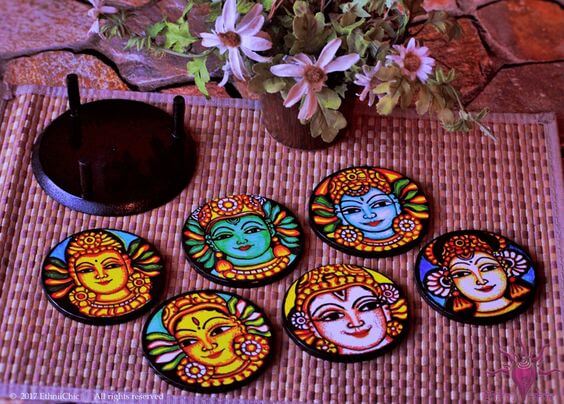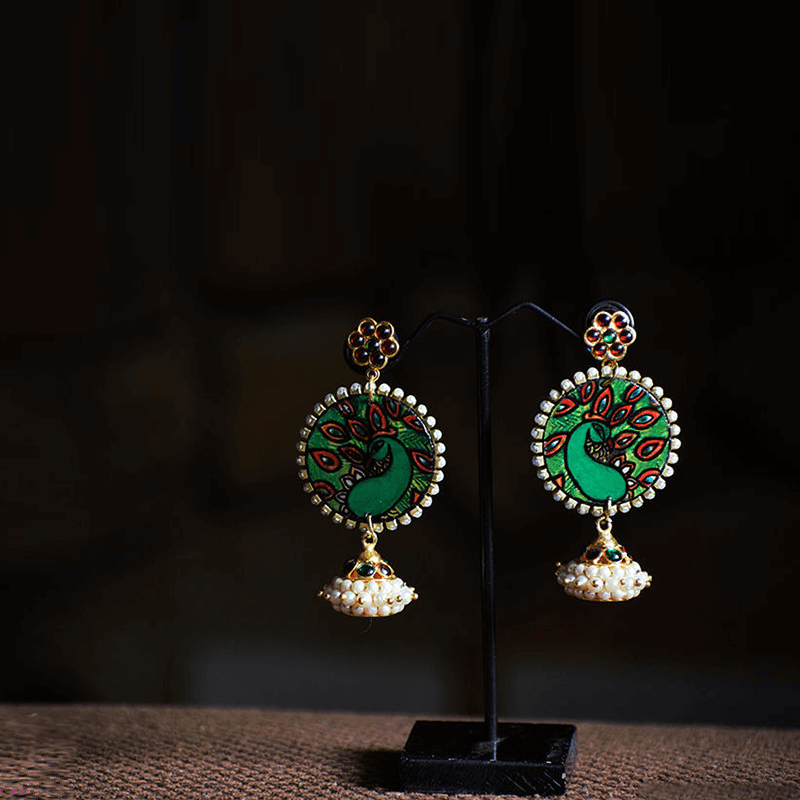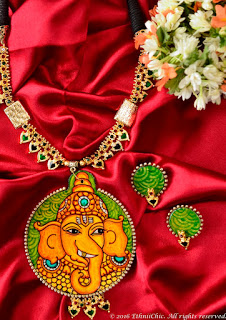Murals of Kerala, dating back to the 8th century, are unparalleled in their subtlety, sharpness, and ethereal beauty. Mural, originating from ‘murus’ from the Latin, meaning wall is an artwork painted directly on a wall or ceiling to blend with the architectural characteristic of the space. The art on the surfaces of temples and palaces, unfolding countless ancient mythological sagas, is a visual treat and evidence of significant perseverance of the artists.

Murals of Kerala is undoubtedly the largest collection of this ancient art form, inspired by epics and folklore and dance forms like Koodiyattam and Mohiniyattam. The figures depicted are rendered with elongated eyes, voluminous lips, and explicit body gestures. A lesser-known fact is that most of the Kerala murals follow the traditional Panchavarna principle, where only five colors - red, yellow, green, black, and white, all derived naturally, complete one particular piece of work.
It is one of the toughest art forms in India to create. Kerala Mural is possibly the only traditional Indian art form where multiple layers of shading and techniques like stippling are used to complete the art form.
It takes six stages for a mural painting to complete. The mural is created in a systematic manner. The six stages are Lekhya Karma, Rekha Karma, Varna Karma, Vartana Karma, Lekha Karma, and Dvika Karma.
The sketch for the whole painting is made in the first stage and the second stage is for enhancing these outlines. It is in the third stage of the painting where all the colors are filled, making it look alive. The fourth stage deals with shading and the fifth one deals with final outlines. The last stage is exclusively for giving the painting some finishing touches.

Each of the EthniiChic's hand-painted piece of art done on a wooden base is an exquisite piece of jewelry. The beads and other materials used are carefully selected to match the hand-painted pendant and look unique. A lot of passion and efforts have gone into making each of the jewelry. Kerala Mural Jewelry in a never seen before avatar – totally grand, totally trendy, totally festive. There has been a deliberate effort not to repeat design for any of the elements in this collection, making each piece a unique entity.


The details are intricately painted with acrylic colors adorned on traditional Kerala Palakka Maala, a combination that is never seen before. Pair this necklace set with a gorgeous sari to look absolutely stunning.
The masterpiece painted in acrylic colors strung together with semi-precious stones embodies mythological characters. Pair these with any ethnic wear/ party wear to give you a complete look. Bring eternal design to your jewelry collection with these handcrafted Mural art pendants from our collection at Wecomart.









































